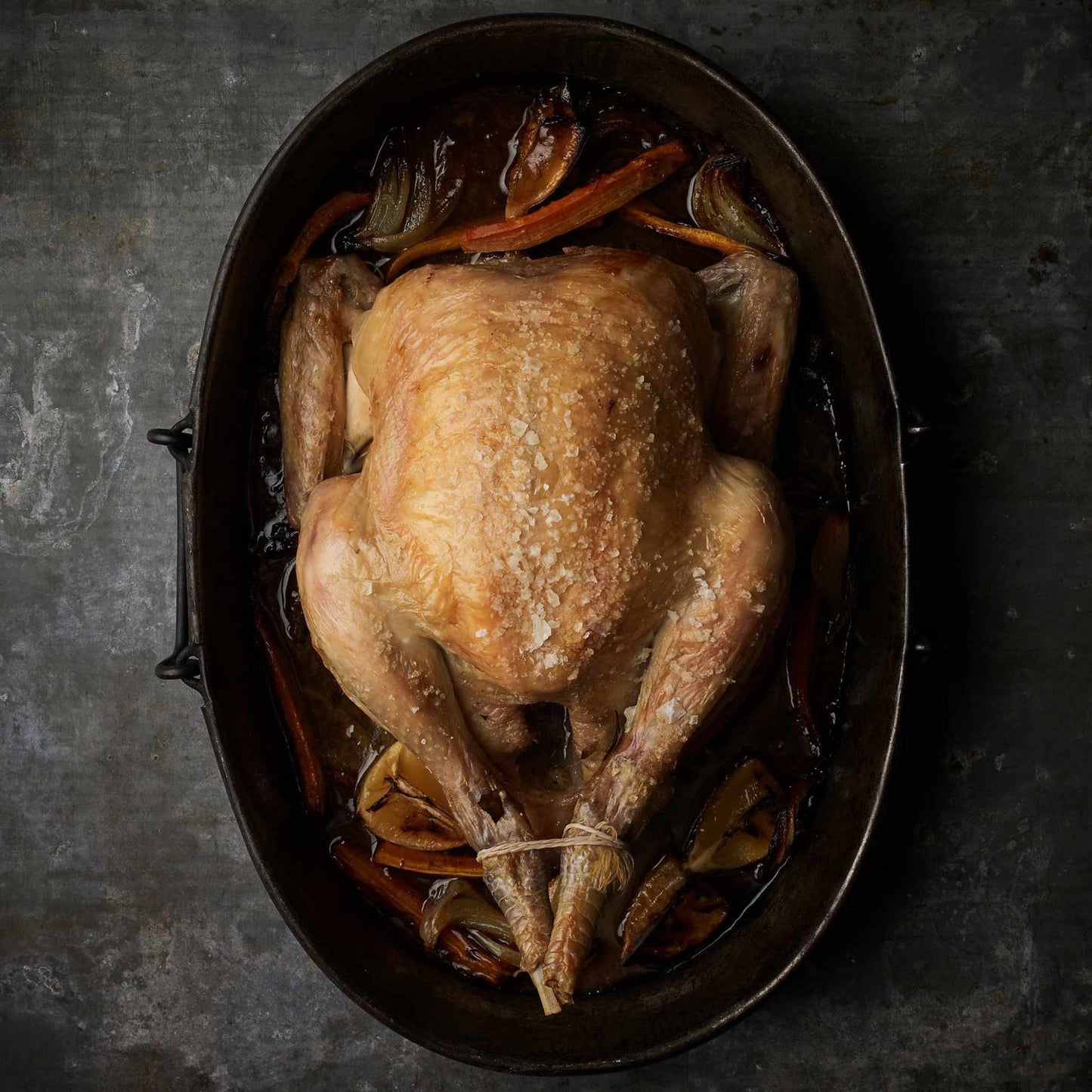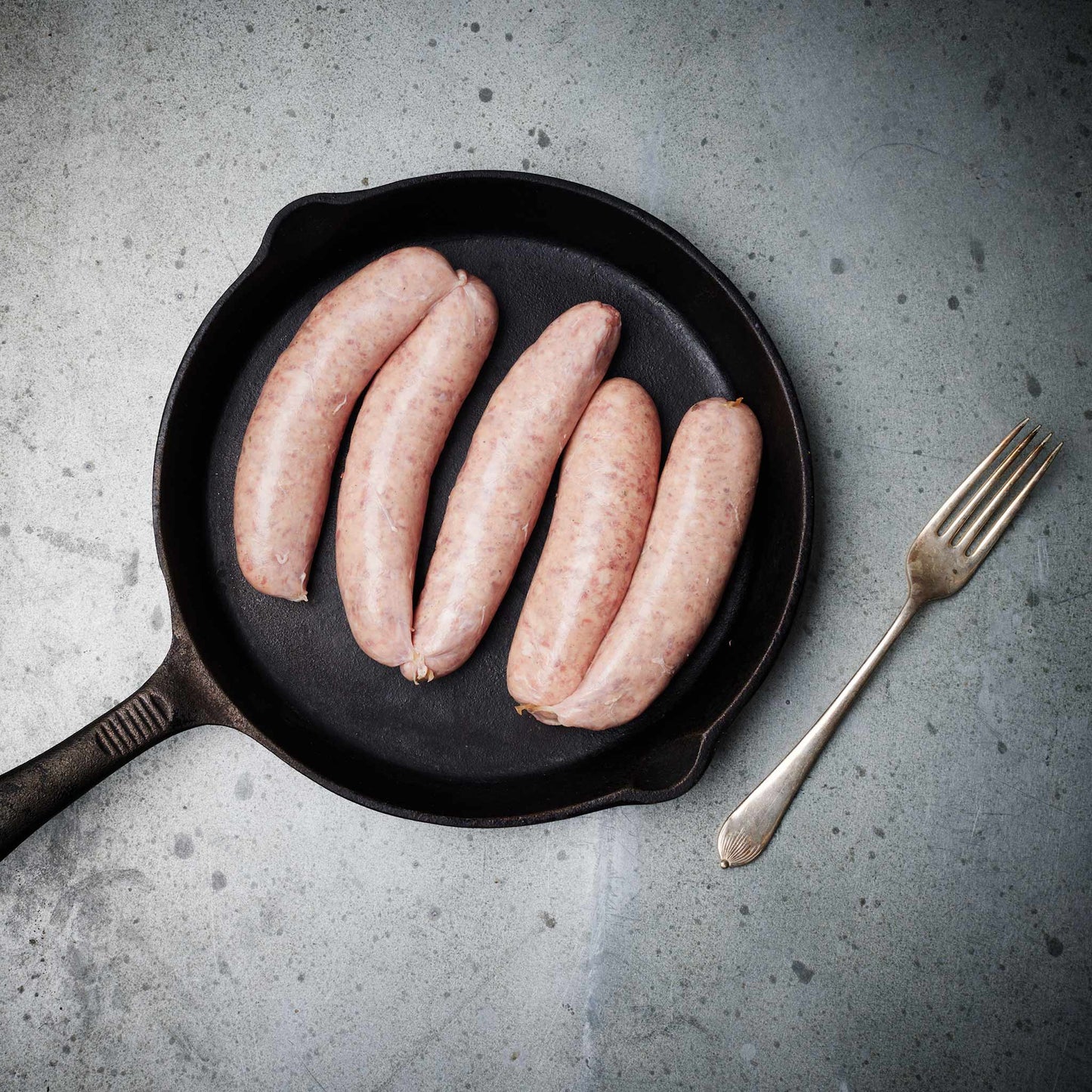We source our chicken from one farm in Leicestershire. The farm is Pasture for Life certified and rears truly free range, outdoor birds.

Serves 4 with leftovers
Ingredients:
2.2kg Leg of regenerative lamb - shop HERE
Sea salt
1 Organic garlic bulb - separate the cloves & peel
50ml Olive oil
50g Organic chamomile flowers or tea (if using tea make sure it is pure flowers)
2 Organic yellow onions - roots off, unpeeled and quartered
Small glass of white wine to deglaze
Small bunch of fresh chamomile
Method:
Take the lamb out of fridge until it reaches room temperature - approx 2 hours
Preheat oven to 180c
Score the skin of the lamb every 1.5 cm to a 5mm depth
Mix the garlic and olive oil in a blender and rub into the skin and cuts
Sprinkle over the chamomile tea leaves and rub into the cuts and skin
Pre-heat a heavy roasting tin in the oven
Add the lamb and quartered onions to the tin and cook for 11/2 to 2 hours - please check the temperature in the deepest, thickest part of the meat. 65c is the ideal temperature for medium rare
After the first 40 minutes baste frequently with the fats and juices in the pan
Remove the meat from the oven and let it rest on a carving board or platter for 20 minutes
Remove the onions from the pan and pour off a small amount of fat
Deglaze the roasting tin on the hob with a glass of white wine and mix with the juices
When the wine is almost evaporated add a little water and mix well, pour over the sliced roast lamb
Garnish with fresh chamomile flowers
Shop Leg of regenerative lamb HERE
Notes:
This might seem like an unusual pairing but the two go together very, very well. Chamomile is a herb that comes from the daisy-like flowers of the Asteraceae plant family. It has been consumed for centuries as a natural remedy with some surprising health benefits.
It used to be fairly common in Britain, but it is now only found in a few areas of southern England, notably the south-west and the New Forest. It prefers mown or grazed grassland in open places, such as sandy heaths, cricket pitches, coastal cliff-tops or open glades in light woodland.
Chamomile contains apigenin, an antioxidant that binds to certain receptors in your brain that may promote sleepiness and reduce insomnia, some studies also show apigenin can fight cancer cells, especially those of the breast, digestive tract, skin, prostate and uterus.
Flavones in chamomile have been studied for their potential to lower blood pressure and cholesterol levels (references at the bottom of this recipe).
_________________________________________
References from Healthline
A systematic review study of therapeutic effects of Matricaria recuitta chamomile (chamomile)
Antioxidant activities of chamomile (Matricaria recutita L.)
Apigenin: A Promising Molecule for Cancer Prevention
Do Flavonoids Reduce Cardiovascular Disease Incidence or Mortality in US and European Populations?



